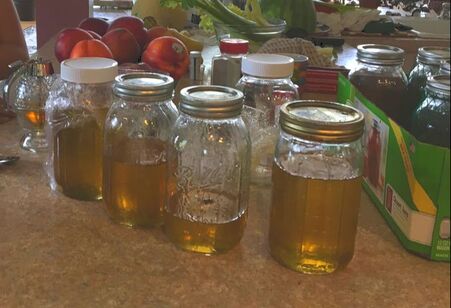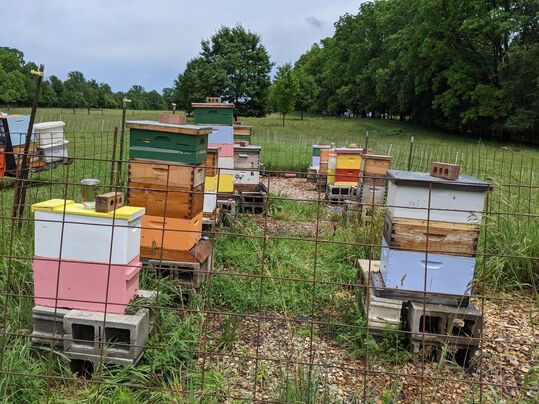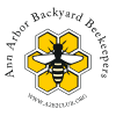 Amazing Honey has many amazing properties. At the proper water content, honey that has been properly stored will never expire or go bad. In fact, honey that has been recovered from Egyptian tombs and is over 2,000 years old is still edible. One of the reasons for this longevity is that honey is antimicrobial, meaning that organisms such as bacteria and fungi do not live and grow in honey (the one exception to this is botulism spores). Three factors that make honey antimicrobial are 1) the fact that it is slightly acidic, 2) that it is a supersaturated solution, and 3) that it contains compounds such as hydrogen peroxide. Honey has been used for thousands of years medicinally to aid in wound and burn healing. Blend Bees make honey during the spring, summer, and fall, but typically only consume it during the winter and early spring, preferring to consume fresh nectar and pollen in the form of bee bread (pollen mixed with nectar or honey) during the honey flow. Honey can be thought of as nectar that has been processed for long term storage. Unlike when bees store the pollen from multiple species of flowers in the same cell, bees only store nectar from the same species of flower in the same cell. Also, honey bees typically store all the nectar obtained from a single floral source in the same area of the hive or same frame. This results in different colors of honey depending on the floral source and different varieties of honey (ex. clover honey vs orange blossom honey). Crop Though I think it’s funny to think of honey as bee vomit, honey is actually the substance produced by bees when regurgitated nectar from their crop (or honey stomach) is exposed to the enzyme invertase produced by the bee’s salivary gland which converts the sugar sucrose from nectar into glucose and fructose. The liquid honey which is now made up of glucose and fructose is stored in the wax cells of the hive and dehydrated by the bees until its water content is at or below 18.6%, at which point the wax cells are capped. More Information: https://honey.com/about-honey/how-honey-is-made
0 Comments
Leave a Reply. |
AuthorJen Haeger is a new master beekeeper and board member of A2B2. Archives
August 2022
Categories
All
|


 RSS Feed
RSS Feed
